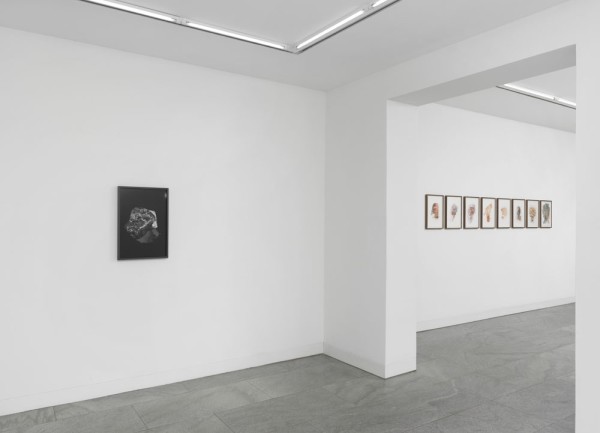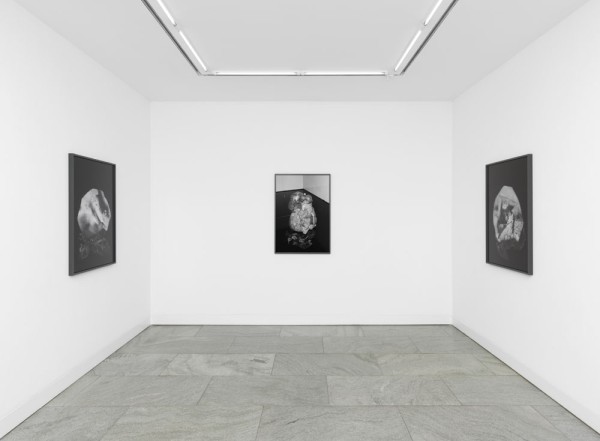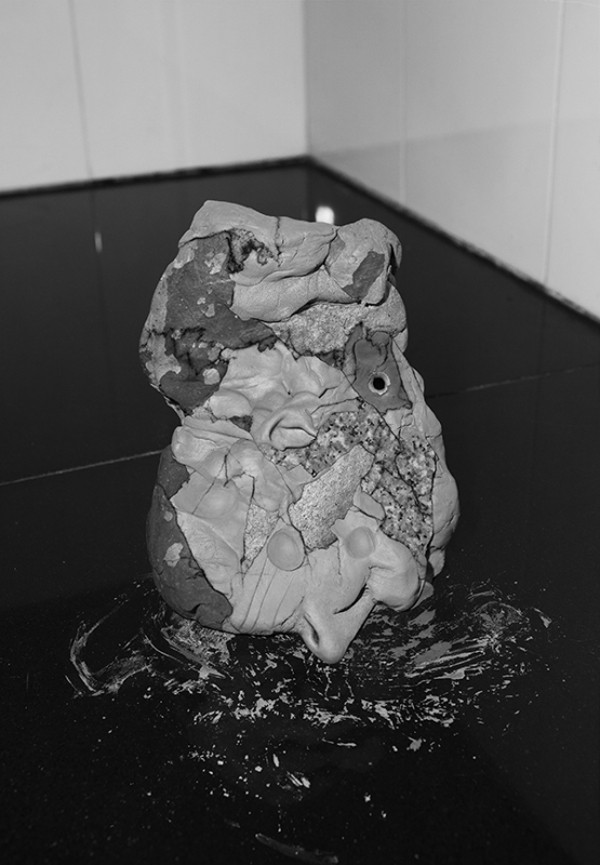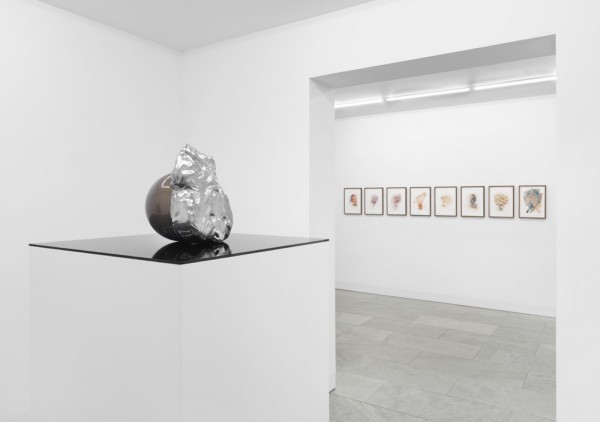Asger Carlsen
Tuesday, 30 June 2015
Works from Drawing from the Hand at Dittrich & Schlechtriem, Berlin
Carlsen passes through the joining together and coordinated superimposing digital image templates to a brutal aesthetics, which focuses on a reassessment of the drawing process and a deformation of the subjects of the silhouette. With DRAWINGS FROM THE HAND Danish artist opens the fictional body hybrids of his earlier image series HESTER and WRONG and creates photographic, objects’ which have both archaic earthy and cosmic intangible remuneration. DITTRICH & Schlechtriem shows them simultaneously disturbing and alluring works in three different formats: 5 pigment prints of digitally synthesized photographs, 8 multi-layered, marble drawings’ on hot press watercolor paper and a shimmering, transmorphe sculpture that is based on a 3D printing.
The large-format black and white pigment prints make the front of the gallery extreme, objects’ on black mirrored glass surfaces. Carlsen, who works with electronic pens on tablet computers, collaged self-portraits with undefined material record and won the gestural vocabulary of Photoshop photo editor, z. B. from the time-consuming Blur, an old-masterly precision. The artist designs a raw, amorphous materiality, meat, metal and combined concrete like textures with partly futuristic surface structures. As a former crime scene photographer NYPD Carlsen has a sensitized access to post-mortem appearance of bodies and contrasts figurative details like eye sockets, noses and ears with coarse cracks and blood-like stains. A job is at times more than 200 photographic templates Step by step in a comprehensive, lasting up to six weeks imaging are combined. While earlier in the series are strategies of resolution and defacing of skin transitions in the foreground, then back breaking and transformation of the human body and its Utopian into Flipped materiality to the fore.
The exported in the format 40.6 x 28 cm, marble drawings’ show semi-transparent, gently towards their edges towards lightening color scenarios. By the artist with a pencil inscribes the silhouette of his face, the invisible gestures of the drawing hand on the computer realized on the concrete image carrier. For this also composed of numerous heterogeneous image layers work Carlsen photographs of the bathroom floor of his New York apartment used in Chinatown. These faded, interwoven by the time linoleum layers to remember this vein systems, maps, hematoma or about organ sections. The formative interplay between contingent soil and an unexpected intimacy by living room and facial contour of the artist also enables personalized readings.
The exhibition is the 3D photopolymer printing an immaterial shiny sculpture, scale 1: is executed to the photographic works 1 and treated with a metallic car paint. The asymmetric, ducted in a dark silver tone and supported by a golden ball relief structure shows the abstracted facial features of the artist. The amorphous, almost virtual character of the work is thereby the status of classical sculpture in question and intensified a trend that has already been created in the photographic series: Carlsen aims in his work on the design and analytical penetration of a kind Hyper-sculpture in which the viewer is clear at any time whether it is analog images of real objects or synthesized Photoshop designs.
Asger Carlsen overcomes DRAWINGS FROM THE HAND conventional boundaries of sculpture, Photoshop editing and classical drawing and cultured while a zone of referential between – objects that exist beyond the categories of the idea of the design and its realization in the material. The previously hidden hand of the artist will be at different levels whether concretely visible by pencil marks or indirectly by fingerprints and modeling traces of the photographed material in his works. While the iconographic unity of the previous series of a new haptic rudeness turns, the associative spectrum increased significantly: morgues, pottery studios and comets surfaces now appear as atmospherically relevant reference points. The silent screams of the sealed body hybrids of Carlsen’s earlier works are transformed through the open medium of drawing in the echo of a new brutality of the material.







